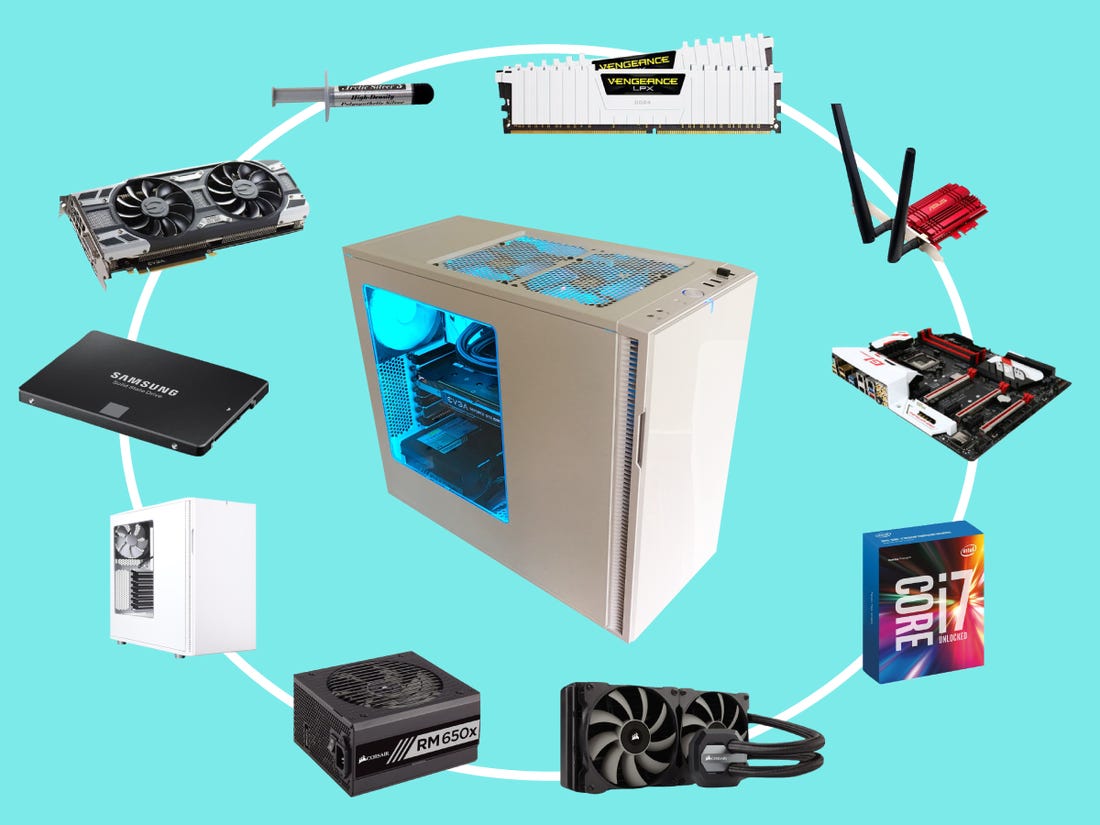How to Build a Gaming PC

Choosing Your Components
The first step in building a gaming PC is choosing the right components. Here are the key components you’ll need:
Processor (CPU)
The CPU is the brain of your computer, and it’s responsible for processing all of the data that your computer receives. When it comes to gaming, you’ll want a CPU that can handle the demands of modern games. Look for a CPU with at least four cores and a clock speed of at least 3.0 GHz.
Graphics Card (GPU)
The graphics card is what allows your computer to display graphics on your monitor. For gaming, you’ll want a powerful graphics card that can handle the demands of modern games. Look for a graphics card with at least 4 GB of VRAM.
Memory (RAM)
RAM is what your computer uses to store data that it’s currently using. For gaming, you’ll want at least 8 GB of RAM, although 16 GB or more is recommended for the best performance.
Storage
You’ll need storage for your operating system and your games. A solid-state drive (SSD) is recommended for your operating system, as it will make your computer boot up faster. For storage of your games, a traditional hard drive will suffice.
Motherboard
The motherboard is what connects all of your components together. It’s important to choose a motherboard that’s compatible with your chosen CPU and graphics card.
Power Supply
The power supply is what provides power to your components. Look for a power supply with at least 500 watts of power, although 750 watts or more is recommended for high-end systems.
Building Your PC
Once you’ve chosen your components, it’s time to put them all together. Here are the steps you’ll need to follow:
Step 1: Install the CPU
Open the CPU socket on your motherboard, and carefully insert the CPU. Be sure to align the notches on the CPU with the notches on the socket, and lock the CPU in place.
Step 2: Install the CPU Cooler
Attach the CPU cooler to the CPU, using the included mounting hardware. Be sure to apply thermal paste to the CPU before attaching the cooler.
Step 3: Install the RAM
Insert the RAM into the RAM slots on your motherboard, and push down until the clips on either side click into place.
Step 4: Install the Storage
Connect your SSD and hard drive to your motherboard using SATA cables, and mount them in your case using the included hardware.
Step 5: Install the Motherboard
Install the motherboard into your case, using the included standoffs to keep it off the case. Screw the motherboard into place using the included screws.
Step 6: Connect the Power Supply
Connect the power supply to your motherboard and graphics card, using the included cables. Be sure to connect the 24-pin ATX power cable and the 8-pin CPU power cable.
Step 7: Install the Graphics Card
Insert the graphics card into the PCIe slot on your motherboard, and secure it in place using the included bracket.
Step 8: Connect the Peripherals
Connect your keyboard, mouse, and monitor to your computer, using the appropriate cables.
The Pros and Cons of Building Your Own Gaming PC
Building your own gaming PC has its pros and cons. Here are a few:
Pros:
- You can choose the components that are right for you.
- You can save money compared to buying a pre-built gaming PC.
- You can customize your PC to meet your specific needs.
Cons:
- It can be time-consuming and complicated.
- You may run into compatibility issues between components.
- You may need to troubleshoot any issues that arise.
FAQs
Q: Is building a gaming PC cheaper than buying one?
A: It can be. Building your own gaming PC allows you to choose the components that are right for you, which can save you money compared to buying a pre-built gaming PC.
Q: What is the best graphics card for gaming?
A: The best graphics card for gaming will depend on your budget and your needs. High-end graphics cards like the NVIDIA GeForce RTX 3080 and the AMD Radeon RX 6800 XT offer excellent performance, but they can be expensive.
Q: How much RAM do I need for gaming?
A: You’ll want at least 8 GB of RAM for gaming, although 16 GB or more is recommended for the best performance.
Q: What is the best processor for gaming?
A: The best processor for gaming will depend on your budget and your needs. Intel’s Core i7 and Core i9 processors and AMD’s Ryzen 7 and Ryzen 9 processors are popular choices for gaming.
Conclusion
Building your own gaming PC can be a rewarding experience, allowing you to customize your PC to meet your specific needs. By choosing the right components and following the steps outlined in this article, you can build a powerful gaming PC that will give you the ultimate gaming experience.
